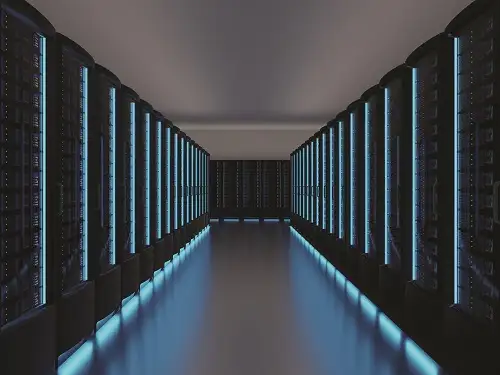
By Carsten Baumann, Director of Strategic Initiatives & Solution Architect at Schneider Electric.
In 2007, the Green Grid proposed an equation that helped change the course of the data center industry:
The total electrical load of the data center divided by its IT load.
This is a simple version of the power usage effectiveness (PUE) ratio. And as far as metrics go, PUE has wielded quite a bit of power, effectively, in shaping energy efficiency targets across the industry.
All the internet giants track it. And when they started tracking it, good things happened. In 2008, a PUE of 1.2 was considered nearly perfect, considering the theoretical ideal target is 1.0. A few years later, Facebook blew past that with a PUE of 1.078. Others soon followed. And the number continues to drop.
The PUE metric, a shared standard that transformed energy efficiency into a single digestible number, paved the way for progress. Although measuring PUE is an excellent tool, the industry is coming together on a shared standard for something much bigger. Overall, data center environmental sustainability is entering the front center stage.
Instead of spurring a race to efficiency, this new metric could spur the race to zero waste, zero carbon, and zero emissions.
The birth of a new sustainability metric/framework
To be clear, plenty of sustainability metrics already exist. But to date there is still no consensus on which ones matter most, and how to organize them into a broadly accepted scorecard. To help build momentum toward consensus, I'll speak with Nancy Novak, Chief Innovation Officer at Compass Data Centers, at the 7?24 Exchange conference in June. In our session, "Achieving Sustainable Data Centers by 2030," we'll explore how the industry can move toward a standard definition.
"Sustainability in our data center operations is an executive topic. Our journey to becoming more sustainable is influenced by our own convictions, and fundamentally driven by our customers and investors. Our progress depends on the ability to measure and implement sustainability on many layers, not just power efficiency," says Nancy.
Nancy and I share a belief that a standard definition is crucial to progress. The logical next step, then, is to develop a clearly defined sustainability framework of metrics that enables the data center industry to standardize, implement, and measure sustainability efforts.
Recent conversations with industry leaders, especially in the hyperscale and colocation markets, inspired our team at Schneider to build such a standard. That work has culminated in a white paper, "Guide to Environmental Sustainability Metrics for Data Centers," that lays out a set of 23 key metrics. (See Table 2) These 23 metrics are sorted into five categories spanning the full spectrum of environmental sustainability, and they're ranked across three levels of achievement: Beginning, Advanced, and Leading.
Toward a more perfect framework
The list of 23 metrics combines the basics, such as total energy consumption and PUE, with more sophisticated measurements, such as hour-by-hour supply and consumption matching and mean species abundance for biodiversity.
Why such a broad array? Because no single metric gives you the full picture. For instance, PUE doesn't account for variables such as regional climate. You can use economizer mode a lot more in Michigan than in Florida. That discrepancy matters, and this scorecard seeks to weigh such variables properly.
Taken together, these 23 metrics offer the industry's first standard for assessing whether a data center is truly sustainable. And that's a major step.
Of course, for a shared standard to work, these 23 metrics need to be measured and reported consistently. That's another hurdle for our industry to clear.
Fortunately, it's not a question of feasibility; the technology to measure all these items exists. The challenging part is aggregating all that data into a meaningful assessment of sustainability. That's where our new white paper comes in, titled "Environmental Sustainability Management (ESM) Software for Colocation Data Centers." This paper lays out a clear approach for doing just that.
No metrics, no measurement, no improvements
The key here is that with measurement comes improvement. It's not a far leap between measuring the data that is using these metrics and finding ways to improve. In fact, finding improvements may be the easy part because cloud-based analytics tools now automate that discovery process.
Ultimately, the story of PUE tells us that once you set a clear, metric-based target, and once you start measuring your progress toward that goal, the results will follow.
In a time when urgency for sustainability is at an all-time high, a standards-based approach is how we connect lofty ambitions with concrete actions. Let's do it together.
Tags: colocation, data center, Sustainability